At🌹RRIS🌹、we have our 🗾Japanese lesson📚 at 2pm everyday for an hour.
The friends in the Toddler class receive their English immersion lessons (5 hours from 9:00 to 14:00) entirely in English, so we provide opportunities for them to learn Japanese as well.
🗾Japanese Lesson Program📚
①Greetings
♪Hajimaru Yo! (Let’s Begin)
Introduce what the current day or holiday is.
②Seasonal Songs
Sing 2-3 monthly songs based on the monthly theme.
Not only do they sing, but they also understand the lyrics and their meanings.
③Reading Various Seasonal Books
Read 2-3 books based on the monthly theme.
To further explore the topics, connect it to an activity.
④Alphabet Play
Karuta、Hiragana Book、Katakana Book、Onomatopeia、Texture Letters、
Shiritori、Tongue Twisters、Palindrome, Quizzes, etc.
(Depending on the age, we also practice writing)
⑤Traditional Games
We will introduce and play in traditional Japanese games.
With tools – Daruma Otoshi (wooden block game), Kendama (cup-and-ball toy), Otedama (beanbags), Ohajiki (traditional Japanese marble game), Sugoroku (board game), etc.
Without tools – games like Oshikura Manju (a pushing game), Ses-Ses-Se (hand-clapping games), and other hand or finger play activities.
By the way, today is Shichi-Go-San.
🌹RRIS🌹 places great importance on the calendar and annual events.
Today, we delved deeper into learning about Shichi-Go-San, even though the content was a bit challenging (=゚ω゚)ノ✨✨✨.
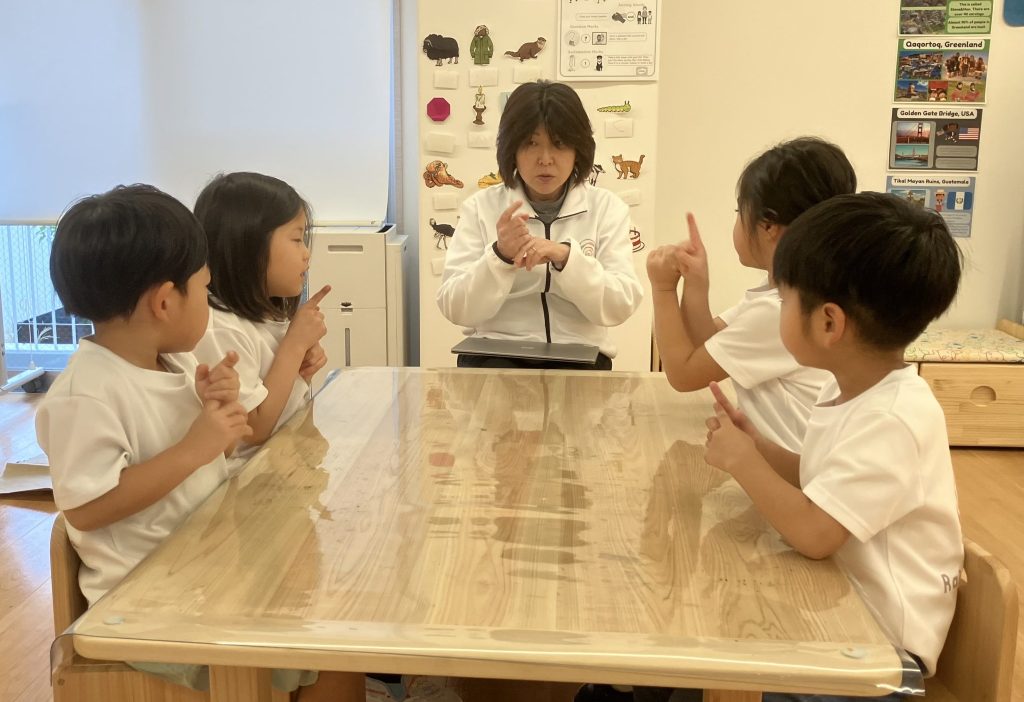
🗾Japanese Lesson📚 Greetings
Teacher) Hello everyone.
Student) Hello
Teacher) Let’s start today’s Japanese lesson. Let’s do our best.
Student) I’ll do my best! (=゚ω゚)ノ!
After the greeting, we sit up straight. Are both feet flat on the floor? Is your bottom pressed firmly against the chair? Is your back straight? Once everyone’s posture is set, we start the lesson with the song “Hajimaru Yo” (Let’s Begin) ♬👆.
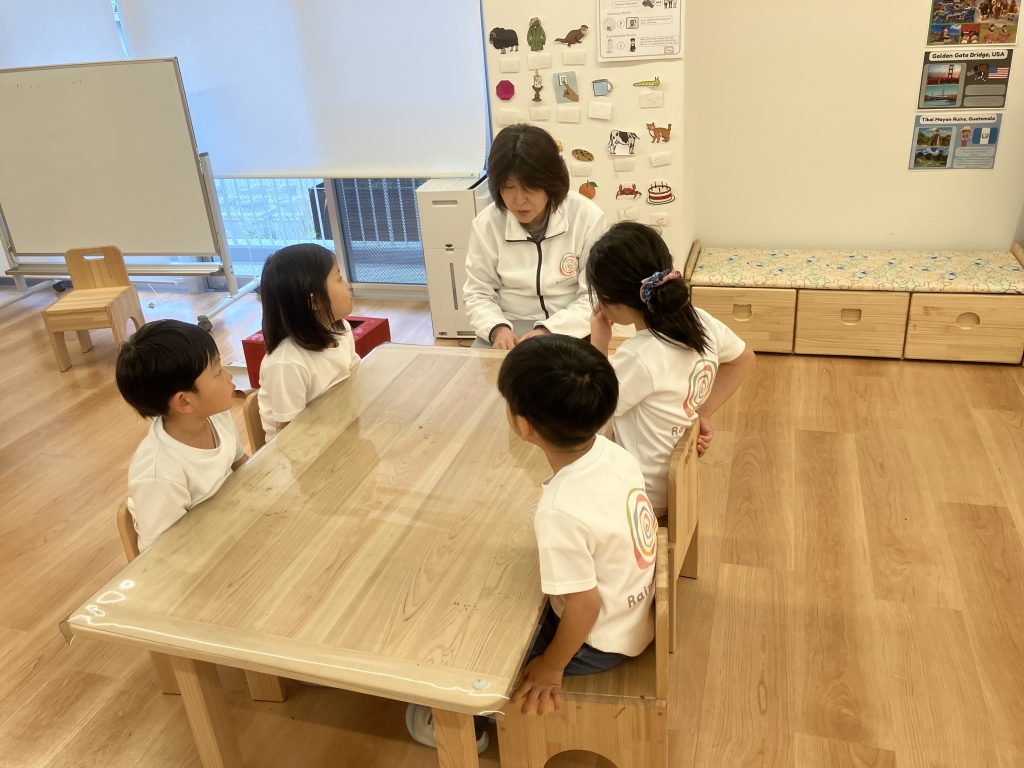
🗾Japanese Lesson📚 What day is it today?
Today is Shichi-Go-San Day. 🌹RRIS🌹 values the calendar and annual traditions.
We made a slight change to the plan and will take time later to thoroughly teach the children about Shichi-Go-San.
🗾Japanese Lesson📚 Seasonal Songs
♬ Futon no naka kara detakunai – “I don’t want to get out of bed”
♬ Natsu no Uta – “Summer Song”
When it gets cold, the little penguin Koupen-chan looks just like the teacher, unable to get up in the morning.
It’s very popular with the friends. Today, we sang it while laughing out loud againヾ(≧▽≦)ノ💮💮💮!
When I introduced the sequel, ♬ Natsu no Uta (Summer Song), the friends began speaking out loud, each sharing their thoughts.
Student) I want to go in the pool again~(੭ु´・ω・`)੭ु⁾⁾
Teacher) Hmm? You played in the pool so much this past summer… (◎_◎;)💦
Even in the evening, we played with the shower outside for a long time… (゚Д゚)ノ💦!
Student) Yea! The teachers kept spraying us with the water over and over (*”▽”)✨✨✨
Teacher: I wasn’t splashing water on everyone because I liked it! ( `ー´)ノ!
(After all, the staff are just the children’s servants…)
No, no, it’s fine. We’ll just do it again next summer!
Student) But…next year we can’t use the pool. We will go to elementary school…( ˘•ω•˘ )
Teacher) \(◎o◎)/!
(Before I could think about it, I could feel tears welling up.)
Then you can come back to visit. Anytime. Really!
I often make a quick comment on the children’s murmurs and sometimes go off track. But I always correct it right away!
At that moment, the word “graduation” popped into my mind, and for a moment, I was at a loss for words… (ノД`)・゜・。
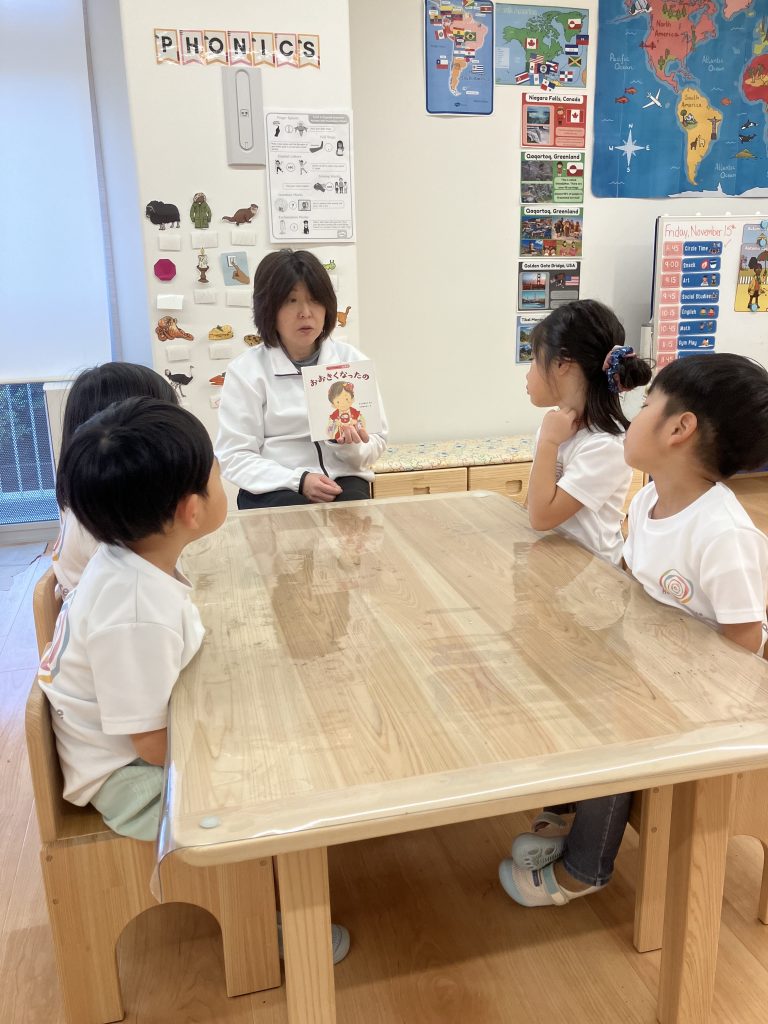
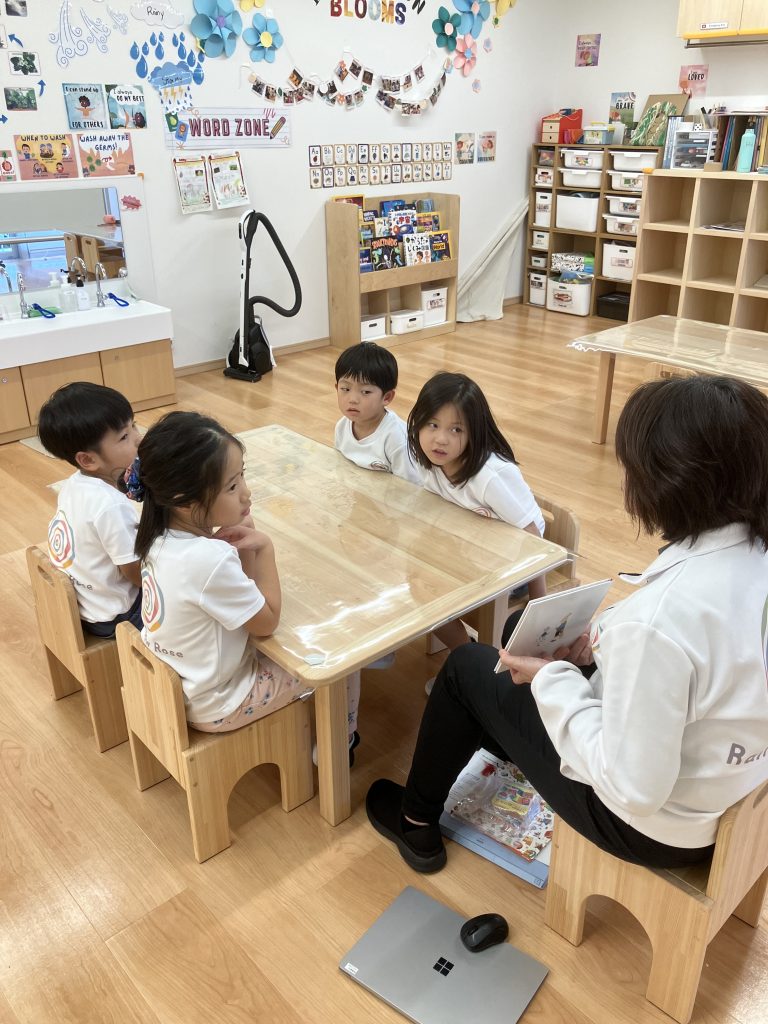
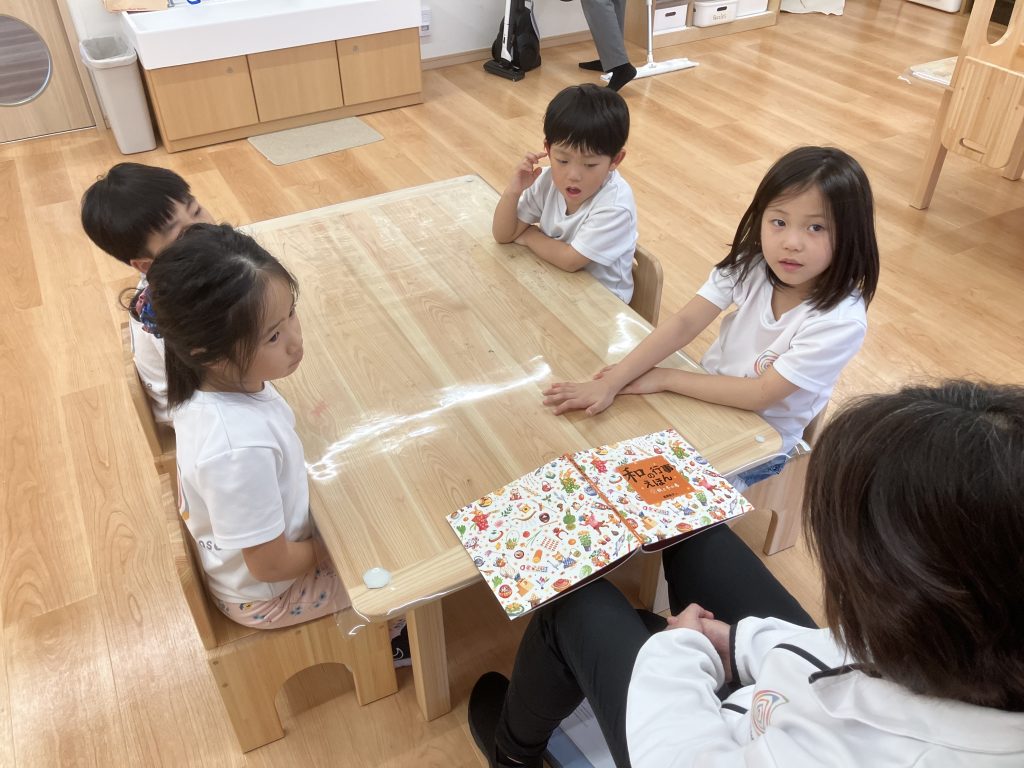
🗾Japanese Lesson📚 Seasonal Picture Books
📚 Ōkiku Natta no – “I’ve Grown Big”
📚 Gyōji no Ehon Aki – “Event Picture Book: Autumn”
We will focus on reading seasonal picture books and books about events. We will also feature series books that the children love. Today’s theme is Shichi-Go-San. Gyōji no Ehon (Event Picture Book) is structured like an encyclopedia, so even adults can deepen their understanding when reading it.٩( ”ω” )و✨✨✨
🗾 Japanese Lesson 📚: Exploring Annual Events
In the picture book reading, we touched on the origins of the events, but I took the time to explain Shichi-Go-San in more detail.
❓ Why is it called Shichi-Go-San?
❓ Why is it celebrated twice?
❓ Why do boys and girls celebrate at different ages?
❓ What do you do during Shichi-Go-San?
❓ What kind of outfits do you wear during Shichi-Go-San?
❓ What traditional foods are eaten during Shichi-Go-San?
❓ What is the origin of Chitose Ame (longevity candy)?
❓ Why do we eat Chitose Ame?
The content might have been a bit difficult to understand, but at 🌹RRIS🌹, we believe in repeatedly discussing and experiencing annual events every year. We hope these traditions will deeply resonate with the children over time.
“After deepening learning, immediate experience and experimentation!” is the 🌹RRIS🌹 method٩( ”ω” )و✨✨✨
Let’s start the action right away ( `ー´)ノ!



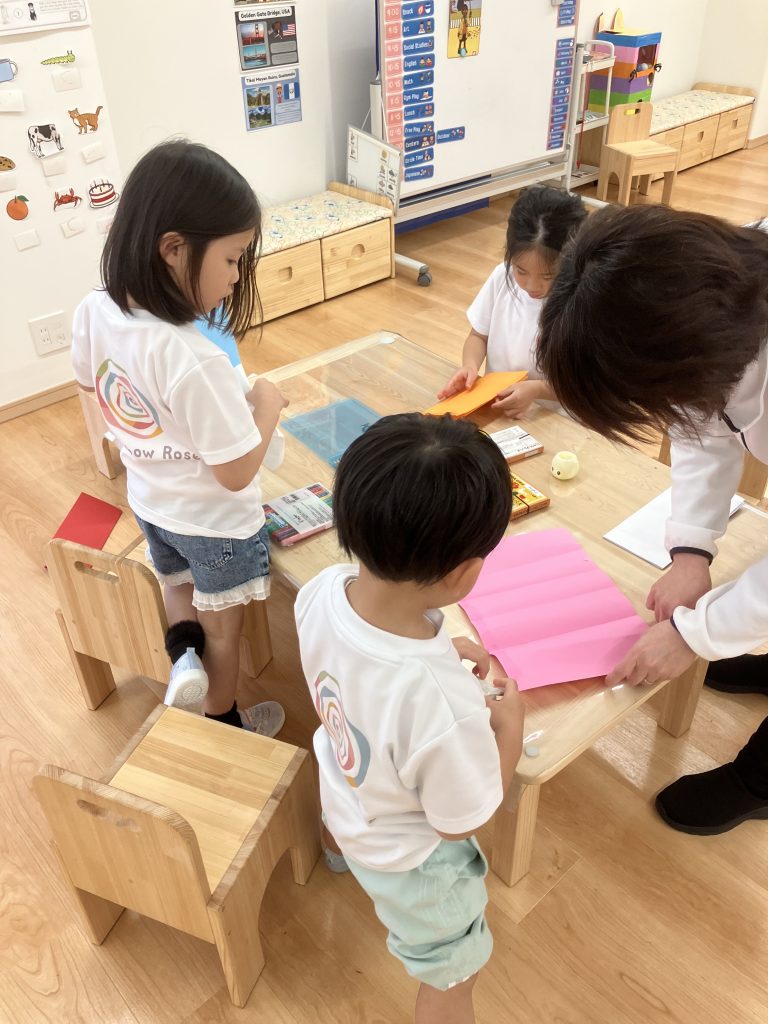
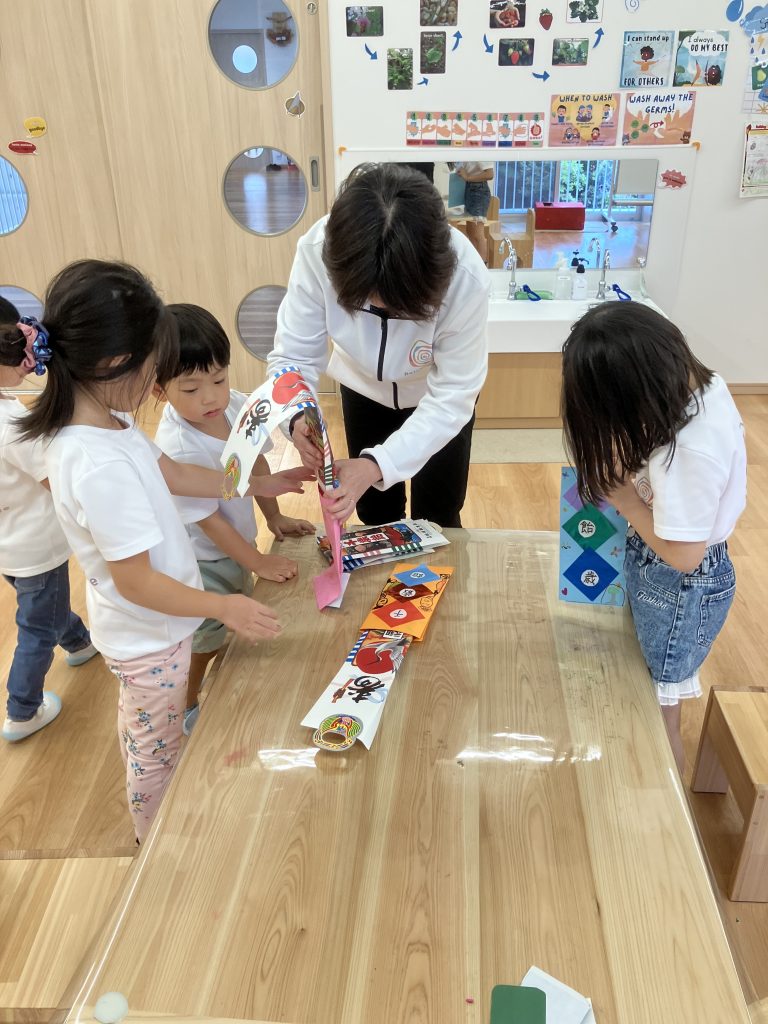

This time, let’s make handmade bags for Chitose Ame (longevity candy).
Yes, yes, every time it’s a bit chaotic~\(゜ロ\)(/ロ゜)/💦💦💦
(But, this is addictive…(´∀`*)ウフフ)
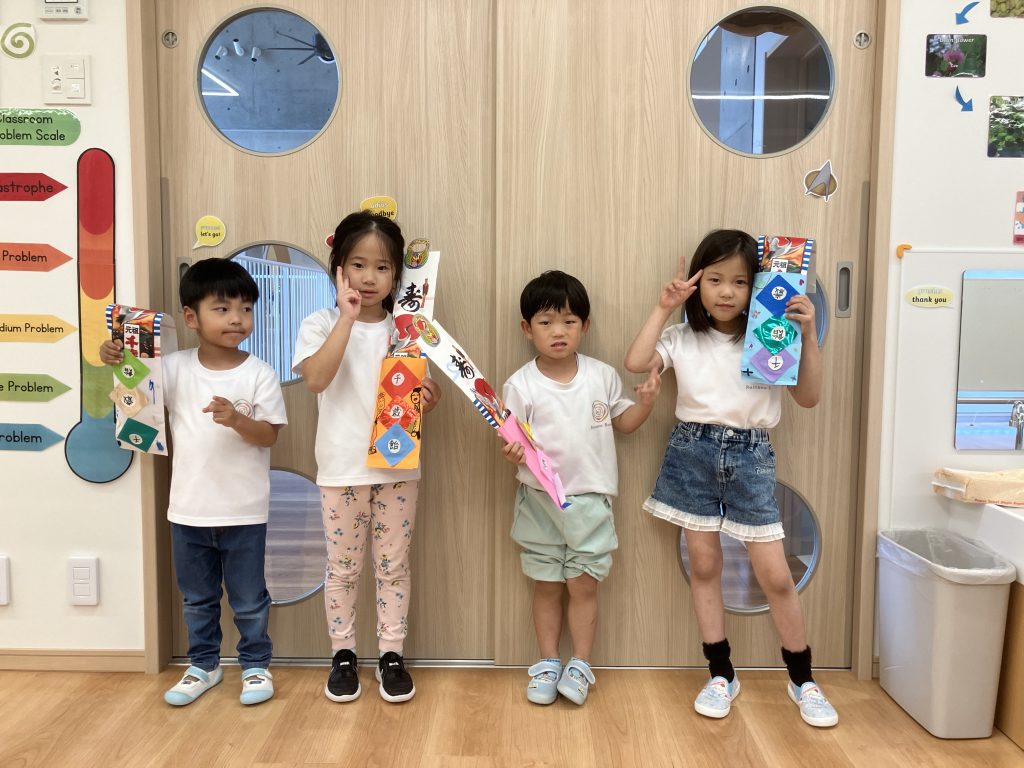
At 🌹RRIS🌹, we want to provide children with as much real-world experience as possible.
This time, we purchased Chitose Ame from a long-established candy maker.
With the wish that the children eat the Chitose Ame and grow up healthy and strong until they are 1,000 years old.
Click below for more school information
🌹Rainbow Rose International School🌹

